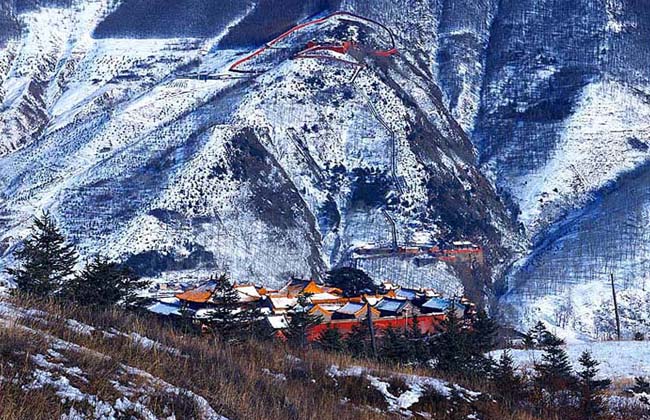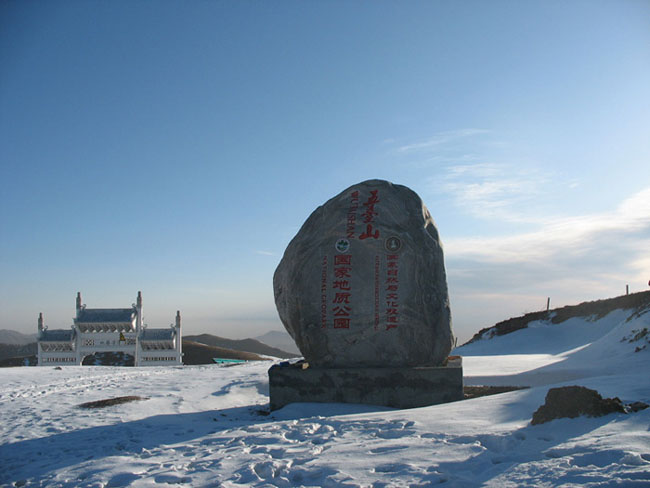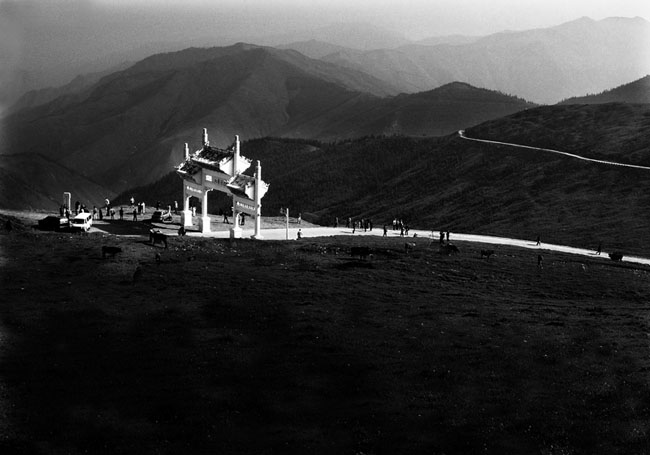Refreshing life on Mount Wutai
By Fang Sha(chinadaily.com.cn)
|
|
| Early winter on Mount Wutai [Photo by Mu Jie/scoco.co] |
Mount Wutai, in Shanxi province, is the most renowned of China's four great Buddhist mountains and is known for its magnificent scenery, culture and heritage, national geological park, national forest reserve, and its AAAAA scenic spot designation and it is now busy preparing to apply for World Natural and Cultural Heritage status.
|
|
|
Stone denoting the National Geological Park and Natural and Cultural Heritage site[Photo by Mu Jie/scoco.co] |
The mountain was first used as for a place to celebrate the Bodhisattva Manjusri, God of Wisdom, so most of the temples here have Manjusri shrines in the main hall, with Manjusri, the disciple of Sakyamuni to his left, riding on a blue-green lion. The most popular story about Manjusri's origin is that he was born in the family of Brahmans, the priestly caste of ancient India, and because of his loving, compassionate heart, was accepted by Sakyamuni as his first disciple. Manjusri was the most intelligent and eloquent of the disciples, so Sakyamuni asked him to oversee the wisdom of mortal beings.
|
|
| Hongmenyan Memorial Gateway, to the north of Mount Wutai [Photo by Yiyuan/scoco.co] |
Wutai covers 250 kilometers, at the north end of the Taihang Mountains in northeastern Shanxi, 90 km from the town of Taihuai, 160 km from the city of Xinzhou, and 240 from the provincial capital Taiyuan.
Edited by Roger Bradshaw



